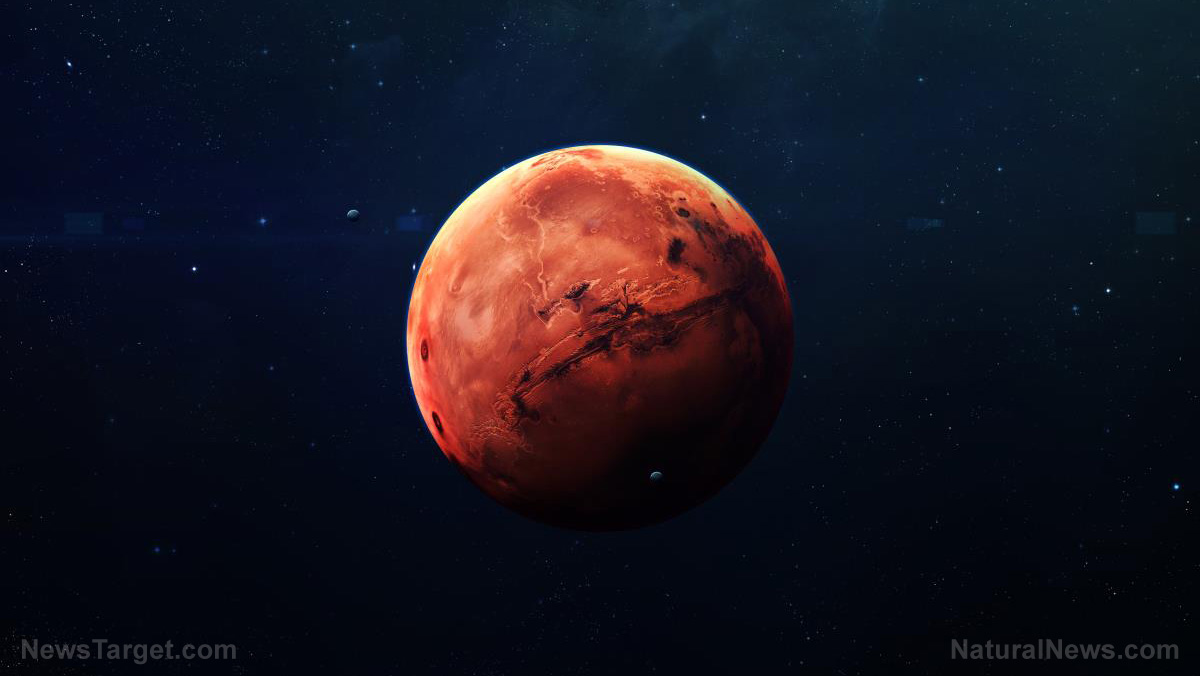NASA spacecraft missions have proven that Mars, Saturn, Jupiter and Venus have all suffered “climate change” … without any human activity whatsoever
by Lance D Johnson, Natural News:
 Temperature fluctuates, the weather shifts, and the climate never stays the same. It doesn’t matter where you live; it has always been this way on planet Earth. Through the course of many centuries, humans, animals, plants, and microbes have exhibited extraordinary resilience in the face of change and are all constantly adapting to this day.
Temperature fluctuates, the weather shifts, and the climate never stays the same. It doesn’t matter where you live; it has always been this way on planet Earth. Through the course of many centuries, humans, animals, plants, and microbes have exhibited extraordinary resilience in the face of change and are all constantly adapting to this day.
But today there is a global movement that seeks to control these cycles, predict and manipulate the changes that naturally take place on our planet. This climate change movement seeks to control levels of atmospheric gases (primarily carbon dioxide) which humans naturally exhale. This climate change agenda seeks to engineer the Earth’s atmosphere in hopes of changing temperature and weather. The implications are unsettling.
The climate change agenda is only interested in proving that human activity is causing the planet to warm. Specifically, this agenda wants to target carbon dioxide as the problem. If they can prove that the Earth is warming by any measure, then they will correlate human activity’s release of carbon dioxide with any cherry-picked temperature increase data. However, correlation doesn’t always equate to causation, and even if scientists could accurately record a consistent temperature increase throughout the Earth’s land, air, soil, and water, why would carbon dioxide automatically be the “pollutant” to blame?
Maybe temperature and weather on Earth is impacted by sun cycles, orbit patterns, and the Earth’s relationship with the sun and other planets. In fact, NASA missions have documented climate change on other planets, including Venus, Mars, Saturn, and Jupiter. If carbon dioxide emissions from human activity were the extreme pollutant burning up planet Earth, then why have other planets experienced extreme heating, climate change, extraordinary storms, and massive changes in their atmospheres? None of these planets have humans present to destroy them, so why should we be worried that our breath is burning up the planet? The Earth has historically survived much greater threats.
The climate change that occurs on other planets puts everything into perspective. The Earth has survived extreme changes over many millennia, while orbiting the sun in a volatile solar system. Should humans really worry about their carbon footprint?
Mars is warming due to solar cycles
Mars is currently experiencing a period of warming as NASA scientists recognize that the planet is exiting a series of ice ages. Habibullo Abdussamatov, head of space research at St. Petersburg’s Pulkovo Astronomical Observatory in Russia, has compared sun cycles with climate data from both Mars and Earth. He says that the current global warming on Mars suggests that any documented warming on Earth could also be caused by these solar cycles. “The long-term increase in solar irradiance is heating both Earth and Mars,” he said. His research isn’t always accepted by the climate change scientists who are dead set on correlating carbon dioxide emissions with warming temperatures, but Mr. Abdussamatov has a valid point. Both Earth and Mars experience orbital changes that affect how much sunlight reaches the planets’ surface. These orbital variations are called Milankovitch cycles. This large scale phenomenon makes the slight carbon dioxide emission influxes on Earth seem trivial in the grand scheme of things.
Carbon dioxide released by human activity pales in comparison to natural CO2 release
The amount of carbon dioxide released by human activity is indeed trivial when compared with the carbon dioxide that is released naturally by the Earth. Most of human-produced carbon dioxide emissions come from the energy sector and are derived from fossil fuels such as coal, natural gas, and oil. The amount of carbon dioxide emission from fossil fuels totaled 33.2 billion tons worldwide in 2011. In comparison, the Earth’s oceans naturally produce 330 billion tons of carbon dioxide during normal ocean-atmosphere exchange. Dissolved carbon dioxide within the oceans is released into the air at the sea surface. Ironically, the oceans absorb similar amounts of carbon dioxide, which helps maintain balance. Animals and plants naturally respire 220 tons of carbon dioxide every year, as part of a cycle. It’s this natural cycle of carbon dioxide release that feeds plant life, resulting in more food and oxygen for humans.



